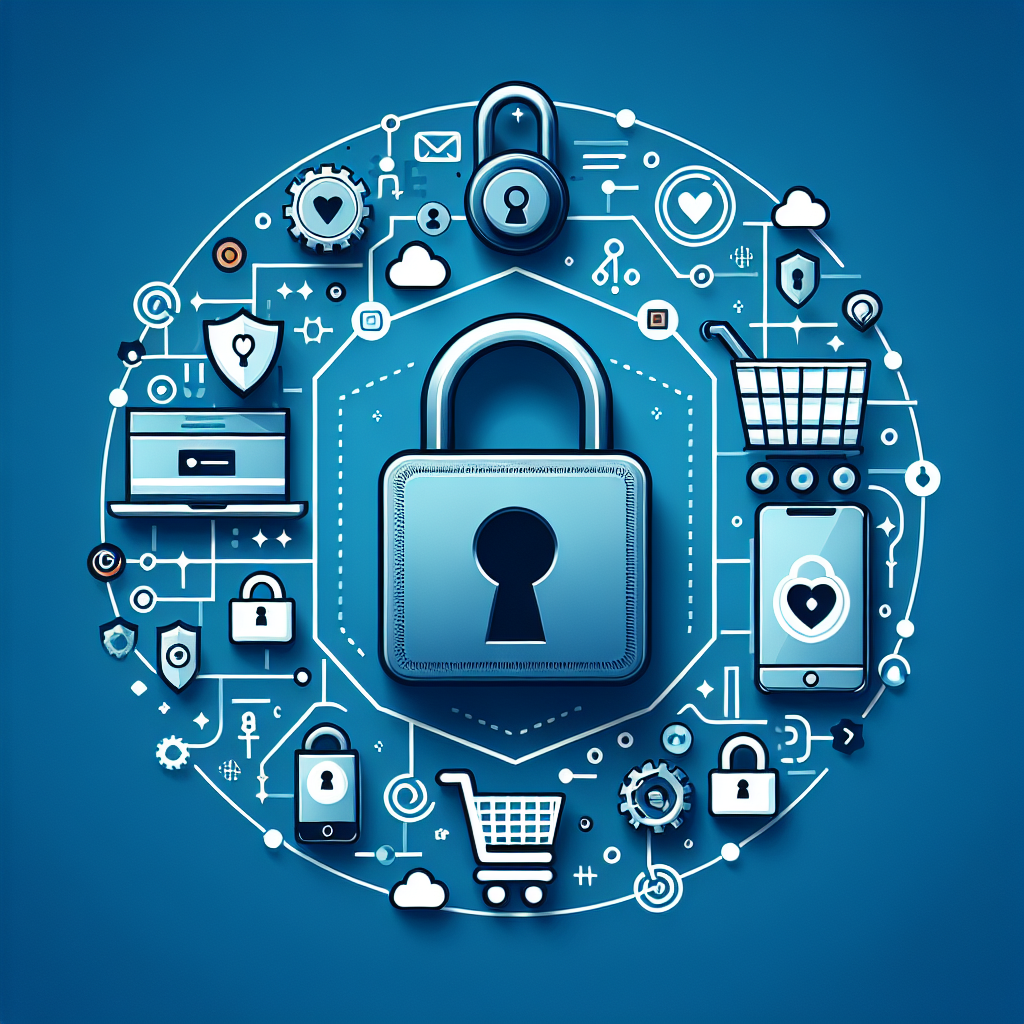Hey there, friend!
You’ve got an online store up and running – that’s fantastic! But let me ask you something, is your store locked up tight? Not just the front door, but every window, backdoor, and tiny nook that could let the bad guys in? Real talk: Ecommerce security is not just important, it’s absolutely critical to the health and reputation of your business. I want your shop to thrive, and that means rolling up our sleeves and diving into the best practices for protecting your digital storefront and the precious customer data within.
##
Understanding the Importance of Ecommerce Security
Think about it – every day, hackers are snooping around, trying to snatch credit card numbers and personal info from sites just like yours. Scary, right? But, if you’ve got the right shields up, you can keep those troublemakers at bay. It’s all about protecting your reputation, your cash flow, and, most importantly, your customers’ trust.
##
Your Security Checklist
Let’s break it down to a checklist. Follow these steps, and you’ll be outfitting your store with an ironclad security suit.
###
Secure Socket Layers (SSL) Are a Must
You know that little padlock icon in the browser bar? When customers see that, they breathe easier. An SSL certificate encrypts data between your store and your customers’ devices, making sure prying eyes stay out of the conversation.
###
Regular Security Audits Are Your Best Friend
Just like taking your car in for a tune-up, regular checks on your site can catch issues before they blow up. Use scanning tools, or better yet, get a pro to peek under the hood every now and then.
###
Keep It All Updated
Software updates – yep, they can be a snooze fest. But they’re often patches for security gaps. So, make sure your platforms, plugins, and tools aren’t running on fumes. Update them regularly.
###
Passwords: The Stronger, the Better
C’mon, “password123” isn’t going to cut it. Encourage your team and customers to create complex, unique passwords, and use a manager to keep track of them all. It’s like picking a stronger lock for your doors.
###
Two-Factor Authentication (2FA): Twice as Nice
This is like asking for a secret handshake after the password. It’s a second layer of defense, often sending a code to a phone or email, that keeps accounts safe even if passwords fall into the wrong hands.
##
Smooth Moves for Payment and Checkout Security
When money’s changing hands, you better believe you need top-notch security.
###
Outsource Payment Processing to the Pros
Let third-party veterans handle credit card processing. They have the tools and expertise to secure transactions, plus it’s one less thing for you to stress over.
###
PCI DSS Compliance: Non-Negotiable
This is like the golden rule for handling credit card info. Follow Payment Card Industry Data Security Standards (PCI DSS) to the letter, and you’ll steer clear of trouble.
##
The Human Element in Ecommerce Security
Remember, it’s not just about code and firewalls – people play a huge role in security.
###
Education is Power
Teach your team about phishing scams and sketchy emails. Knowledge is power, and every employee can be a watchdog for your store’s safety.
###
Limit Access and Permissions
Not everyone needs the keys to the castle. Give employees access only to what they truly need for their role. It’s easier to track and safer for everyone.
##
Back(up) It Up
Backup, Backup, Backup! If things go sideways, having a recent backup of your store can mean the difference between a slight hiccup and a total meltdown.
###
Regular Backups Are Your Safety Net
Schedule regular backups of your entire ecommerce platform. It’s like insurance for your data – you hope you never need it, but you’ll be so glad it’s there if disaster strikes.
###
Use Secure and Reliable Backup Solutions
Whether it’s cloud services or physical servers, make sure your backups are as secure as your live site. Cheaping out on backups is like putting a band-aid on a broken arm.
##
Disaster Recovery Planning: Be Prepared
Sure, it’s doomsday talk, but having a disaster recovery plan pays off. Know exactly what to do if security is breached, and practice it, just like a fire drill.
###
Identify Weaknesses and Plan Accordingly
Every store is unique. Identify your specific vulnerabilities and create a play-by-play plan to address them if they’re exploited.
###
Regularly Test and Update Your Recovery Plans
Run through those disaster recovery plans regularly. It keeps the team sharp and might reveal new chinks in the armor to patch up.
##
Frequently Asked Questions
Let’s tackle some common head-scratchers about keeping your online store safe and sound.
###
How often should I update my ecommerce software?
Your ecommerce platform should be updated every time there’s a new release or patch, particularly for security updates. Aim for at least once a month.
###
What’s the most overlooked aspect of ecommerce security?
People often forget about the human element. Training staff to recognize threats and maintaining simple security practices, like regular password changes, can go a long way.
###
Is it expensive to maintain high levels of ecommerce security?
Costs vary, but think of it this way: a breach could cost you your entire business. Investing in security is really investing in your business’s future.
Protecting your online store is no joke – there’s a whole digital world out there trying to get their hands on your goods. But with these best practices, you’re not just locking the door; you’re setting up a security system that rivals Fort Knox. It’s about being proactive, smart, and always on guard. Your customers will thank you for it, and you’ll sleep better at night knowing your store and their data are in a digital safehouse.
Cheers to a safer ecommerce experience!

Leave a Reply